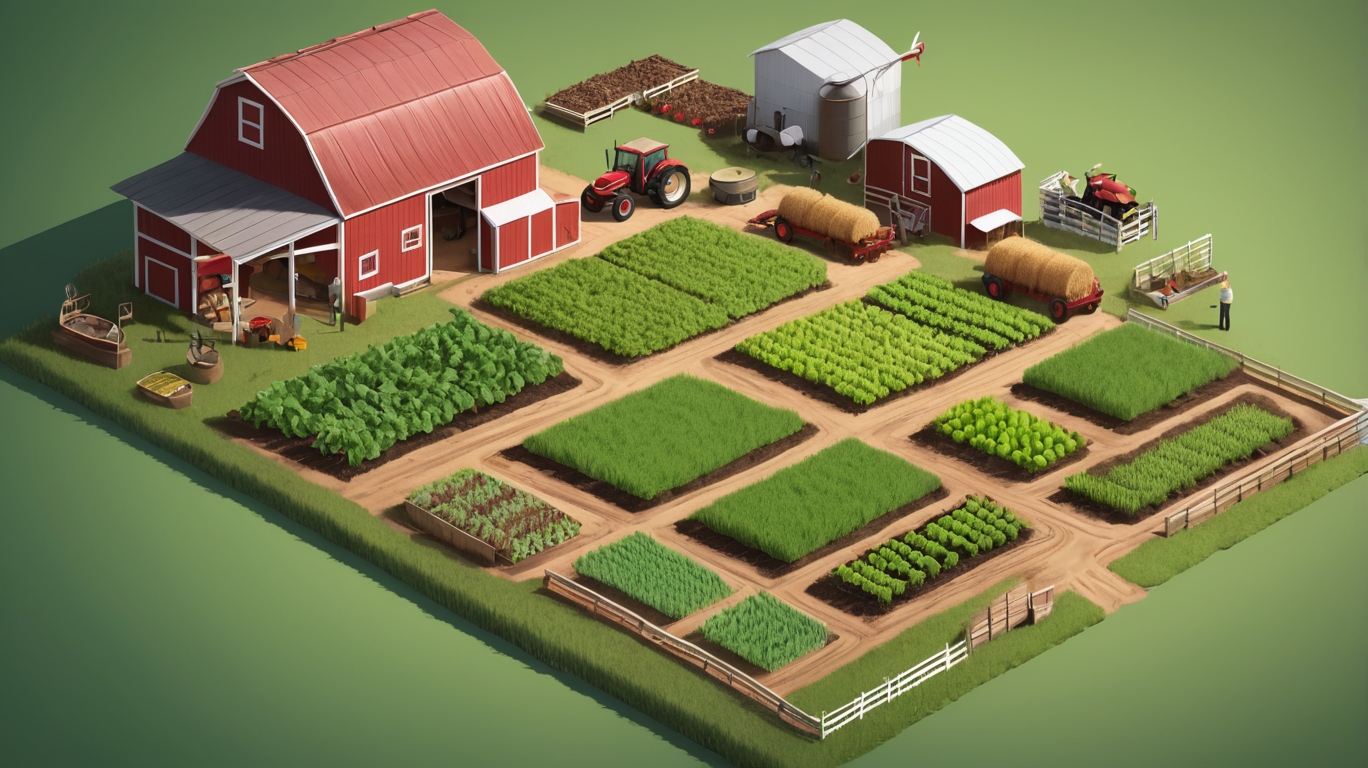How to Write a Business Plan for Your Farm
Starting or expanding a farm is an exciting journey, but like any business, it requires careful planning. A well-crafted business plan helps you clarify your goals, secure funding, and make informed decisions. Whether you’re growing crops, raising livestock, or running an agritourism operation, here’s a simple guide to writing a business plan for your farm.

1. Start with an Executive Summary
The executive summary is a brief overview of your farm business. While it appears first, it’s often easiest to write last, once you’ve fleshed out the rest of your plan. Include:
- Your farm’s name and location
- The type of farming you do (organic, conventional, specialty crops, livestock, etc.)
- Your mission and vision
- Key financial projections (if seeking funding)
Keep it concise—one to two pages at most.
2. Describe Your Farm Business
This section provides more detail about your operation. Answer questions like:
- What products or services will you offer?
- What makes your farm unique? (e.g., organic practices, heritage breeds, direct-to-consumer sales)
- What is your business structure? (sole proprietorship, LLC, cooperative, etc.)
- How long have you been farming, or is this a new venture?
Paint a clear picture of what your farm does and why it matters.
3. Conduct a Market Analysis
Understanding your market is crucial for success. Research:
- Target customers (local restaurants, farmers’ markets, CSAs, wholesale buyers)
- Competitors (other farms in your area and how you differentiate)
- Industry trends (demand for organic produce, pasture-raised meat, etc.)
This research will help you refine your sales strategy and pricing.
4. Outline Your Products and Services
Detail what you’re selling, including:
- Crops, livestock, or value-added products (like jams, cheeses, or wool)
- Expected yields or production volumes
- Pricing strategy (premium pricing for organic, bulk discounts, etc.)
If you offer agritourism (farm stays, workshops, pumpkin patches), describe those as well.
5. Develop a Marketing and Sales Plan
How will you attract and retain customers? Consider:
- Sales channels (farmers’ markets, online sales, wholesale, subscriptions)
- Branding (farm name, logo, story)
- Promotion (social media, website, local advertising, word-of-mouth)
A strong marketing plan ensures you reach the right audience.
6. Create an Operational Plan
This section explains how your farm will run day-to-day. Cover:
- Land and facilities (owned or leased, infrastructure needed)
- Equipment and supplies (tractors, irrigation, feed, seeds)
- Labor (will you hire help, rely on family, or use volunteers?)
- Production timeline (planting, harvesting, breeding cycles)
Think through logistics to avoid surprises later.
7. Build a Financial Plan
A realistic financial plan is essential, especially if seeking loans or grants. Include:
- Startup costs (land, equipment, seeds, animals, permits)
- Revenue projections (monthly or yearly sales estimates)
- Expenses (feed, labor, utilities, maintenance)
- Break-even analysis (when will you start making a profit?)
If you’re new to farm finances, consider consulting an agricultural accountant.
8. Assess Risks and Contingencies
Farming comes with uncertainties—weather, pests, market fluctuations. Identify potential risks and how you’ll mitigate them, such as:
- Diversifying crops or income streams
- Purchasing insurance
- Building emergency savings
Being prepared helps you adapt when challenges arise.
Final Thoughts
Writing a business plan may feel overwhelming, but it’s a valuable tool for guiding your farm’s growth. Take it step by step, revisit your plan annually, and adjust as needed. With clarity and preparation, you’ll be better equipped to build a sustainable and successful farming business.
Would you like help refining a specific section? Feel free to reach out—I’m happy to help!